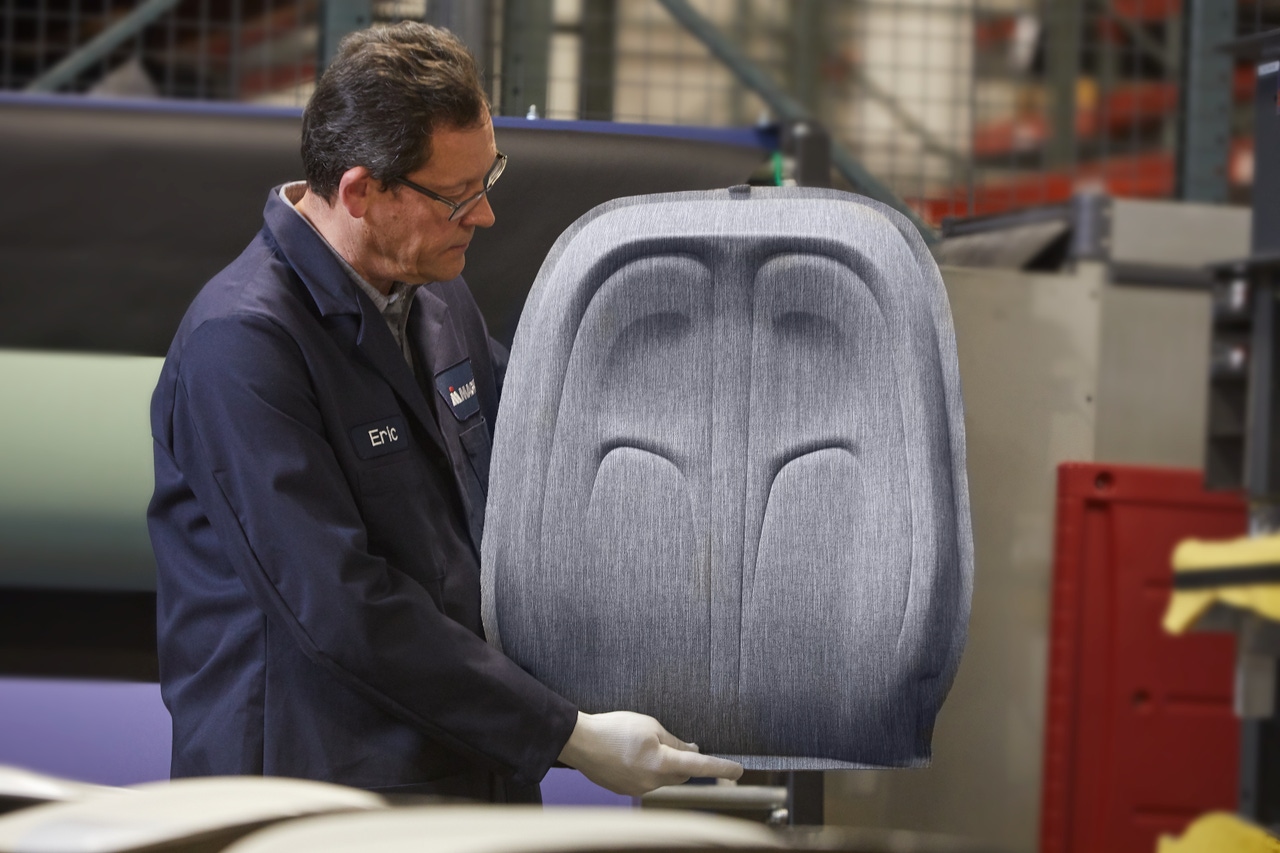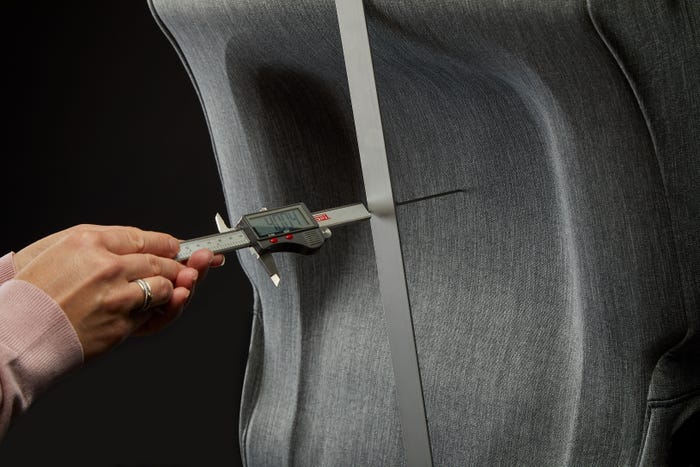Magna Seating Introduces Comfort-Enhancing TechMagna Seating Introduces Comfort-Enhancing Tech
The FreeForm technology allows more than 102 mm of concavity, which is nearly impossible with traditional cut-and-sew manufacturing techniques, Magna says.

SHELBY TOWNSHIP, MI – Nothing will make or break a new-vehicle sale faster than seats. They are the first thing a prospective buyer experiences when they open the driver’s side door and sit down.
With consumers all over the world spending more time in their vehicles than ever commuting, chauffeuring children and just bogged down in traffic, seat comfort and style never has been more important.
These trends led Magna Seating to develop FreeForm, a new seat trim cover technique that promises more comfort for both front- and rear-seat passengers and “endless design possibilities,” says Dino Nardicchio, global vice president-Advanced Technology Engineering.
The announcement was made at Magna’s Shelby Foam Systems plant here, which is celebrating the manufacture of 50 million seat foam pads since 2010.
The new seat trim cover is created using a patent-pending foam laminate that allows for much more dramatic seat curves compared with today’s relatively straight seatbacks. In one future scenario, the seat cover can even be unzipped and removed for cleaning.
Magna’s in-house biosciences experts recommended seats with a highly concave lower back seat shape as the most effective path for improving comfort. This feature, coupled with bolsters, was determined to provide the most support for the lower back because highly contoured surfaces hug the human shape and help reduce fatiguing micro motions of the spine.

Back of seat_4 in deep concavity
The FreeForm technology allows more than 102 mm (4 ins.) of concavity, which is nearly impossible with traditional cut-and-sew manufacturing techniques, Magna Seating says.The seatbacks also offer improved comfort for rear-seat passengers. They are soft to the touch and provide up to 4 ins. of additional knee room.
The new seat trim cover technology also enables designers to create new seat designs with crisper lines for striking visual effects. It can achieve design details with a radius of 3 mm or 4 mm (0.12-0.16 ins.), compared with 20 mm to 25 mm (0.79-0.98 ins.) for traditional cut-and-sew methods, Nardicchio says. “It’s a great way to differentiate seats. You can do any kind of shape or form. The initial reaction we get from most car designers is one of pleasant surprise,” he says.
Another benefit is the seats are easier to clean because they have a simpler construction with a seamless surface and no crumb-catching “trenches.”
A global consumer survey revealed that small seat crevices that collect debris ranked seventh out of 70 gripes about automotive seats, Nardicchio says.
The FreeForm process can be used in both low- and high-volume vehicle programs, with all seating surface materials, and will go into production in the next couple of years, Magna says.
Read more about:
MagnaAbout the Author
You May Also Like

